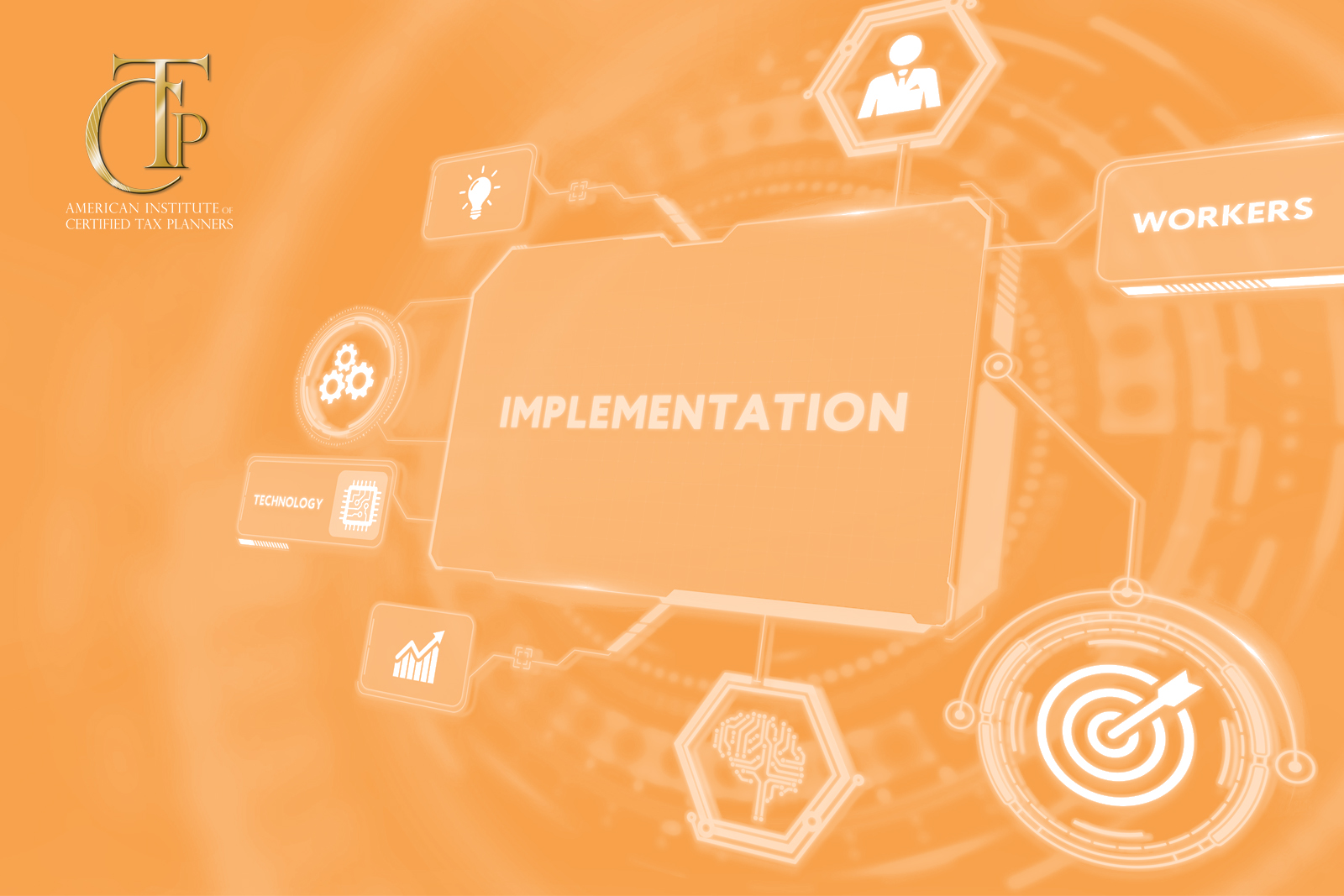As tax filing season comes to a close, taxpayers may be breathing a sigh of relief—or a sigh of agony depending on the size of your tax bill. The temptation is to push taxes out of your mind until next spring, but the reality is that now is the time to begin your strategic planning for next year. Creating your tax plan early allows you to make use of all the best techniques, angles, and methods to save you money. However, the most amazing tax strategy is nothing without that essential next step: implementation.
Many taxpayers have heard about popular tax tips and tricks but either don’t know how to implement them or struggle to make the time. When you work with a Certified Tax Planner, they can help you to identify the strategies that will work best for your circumstances. They can also create an implementation plan that outlines the steps you need to take—including those that can be outsourced to your business team, contracted specialists, or the tax planner themselves. Formulating that implementation plan now can save you headaches down the road and ultimately save you countless tax dollars.
What is Implementation?
Implementing a tax plan is a form of strategic execution. You will work with your tax planner to define your goals and the steps your company needs to take to reach those goals. Are you trying to get out of debt? Are you saving for a child’s education or your retirement? Are you paying off a mortgage? Answering questions like these will help you prepare for the first step of strategy execution:
Step 1: Strategy Creation. Before you know what implementation will look like, you will need a tax strategy. You will typically start by answering a questionnaire that will help your tax advisor to brainstorm strategies that could save you money. This could include creating a C corporation or opening a new retirement account.
Step 2: Create a Plan for Implementation. Once you and your tax advisor have agreed on a cohesive tax plan, it’s time to outline the steps needed to actually execute on the strategy. This may include finding supporting documentation to establish your strategy, such as contracts, payroll, and record keeping systems. Remember, if you can’t prove that something is true with a paper trail, then it does not exist in the eyes of the IRS.
Your strategy may come with certain legal needs, such as entity formations, creating trusts, setting up bank accounts, or transferring ownership of certain assets. Lastly, your tax planner may advise that you work with specialists, such as actuaries, engineers, real estate experts, or bankers, to achieve certain goals. Taxpayers who are not used to proactive tax planning may hesitate to get more parties involved in the process, but remember that paying a little extra money now to gain the help of an expert can yield exponential savings later.
Step 3: Coordinate Business Operations. Remember that the benefit of having a business team is that you can leverage their talents and their time to help execute your tax plan. Who are the key players on your team? Who can be resourceful to you in helping to implement the tax plan? The best implementation strategy will dovetail nicely with your business’ existing processes and operations.
Step 4: Monitor the Performance of the Strategy and the Team. Once you have set up those initial processes for anything new, every person on your business team, plus any outside contractors, should be ready to run with their assigned responsibilities. If you need assistance ensuring each item is on track, talk to your tax advisor about how they can assist in monitoring this process or recommending sources of support. Some tasks may be more complicated than others—say establishing a new C corporation or initiating an income shifting strategy.
Step 5: Test and Adjust the Strategy. One of the many benefits of a proactive tax strategy is that you are giving yourself adequate time to monitor the performance of that strategy and change it as needed. This ensures ultimate savings when tax filing season rolls back around.
A strategic execution plan is essential to securing maximum tax savings. However, even the best strategy will be ineffectual without clear decision-making on who will implement which pieces and when. By enlisting the help of experts and your own business team, you can ensure that you have both the skill set and capacity to implement your tax strategy.
For assistance creating a full tax implementation plan, reach out to a Certified Tax Planner today.





